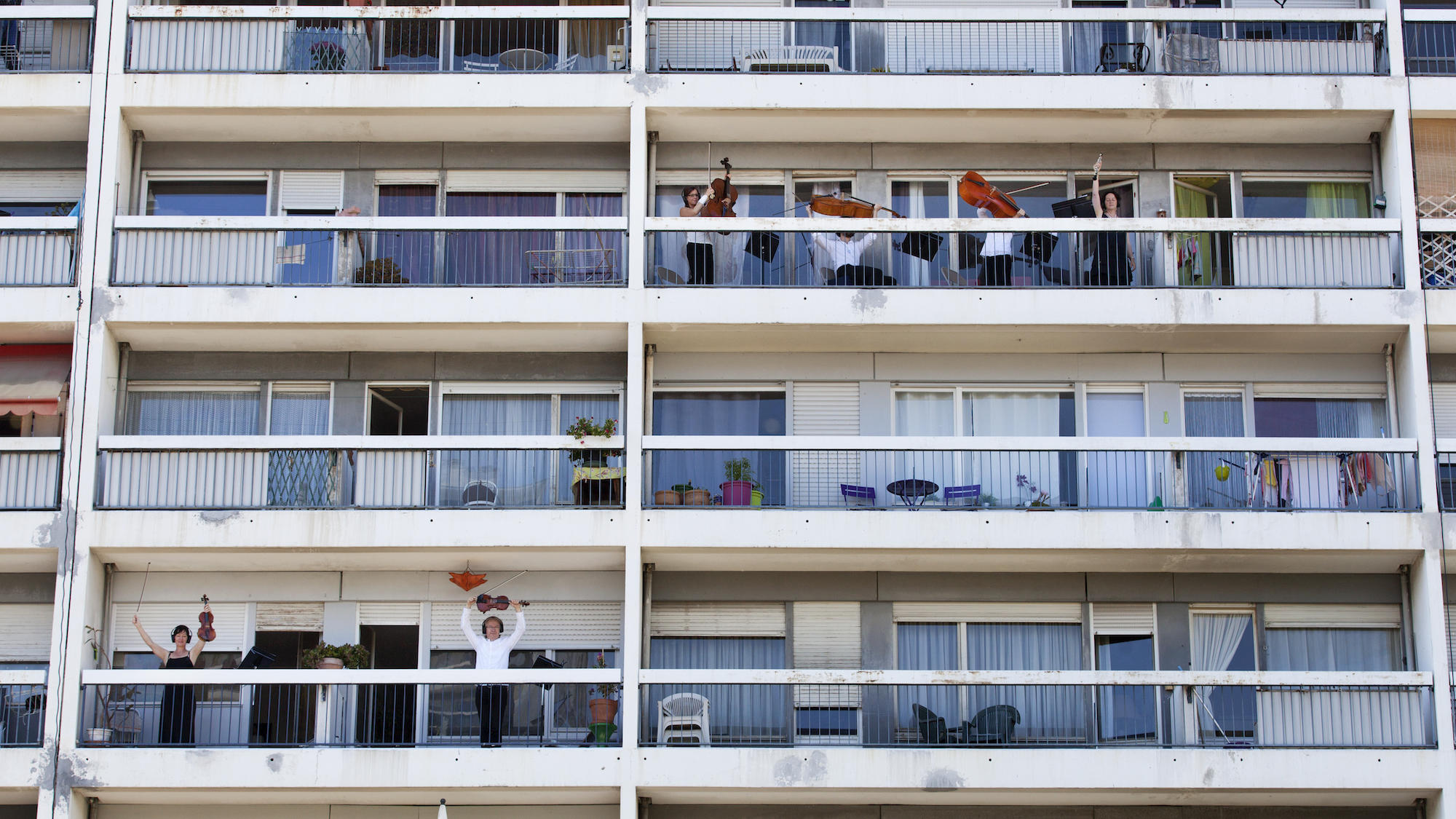A New Popular Art
Publication

Lieux publics & Cie - Grand Ensemble © Grégoire Edouard - Lieux publics & Cie - Grand Ensemble © Grégoire Edouard
Artists all over Europe are developing new forms of performance and relationships with their audience, reaching beyond the usual “art spaces” – on the quest for a new kind of public space. By reaching beyond established cultural sites, achieving a close and direct contact with people and deeply focussing on processes of change in the urban environment, art can make an enduring contribution to the development of cities and citizens. In this way, populism can be forced to give way to art and to the people.
Populism has became one of the keywords in our everyday life, interweaving the social environment all over the world. The fact of the matter is that this way of manipulating human fears and creating instability by means of power is as old as mankind.
The role of art as a means to fathom social upheavals, as an echo-sounder for measuring imbalances and anticipating socio-political earthquakes, seems obvious. What has changed at a rapid rate is the ranking of media communication and the facility to reach a huge crowd in less than the blink of an eye. Art is reflecting on these new means of accessibility and art in public space is particularly appropriate to offer people a wider perspective and possibly protect them from unquestioned attitudes. The forms of expression are diverse – artists can shout out statements or whisper messages in sensitive moments. In any case, artistic creation will be able to adapt to these new dimensions of communication systems in order to explore the role of art in communities, in neighbourhoods, at the margins, on the periphery of urban accumulations.
A lot of emerging artists are working in so-called emerging spaces – they charge or recharge territories with the spirit of creation and artistic vision, involving the population in a popular way. Artists all over Europe, with long-standing partners from the IN SITU network (La Strada in Graz in Austria is celebrating its 20th anniversary), are developing new forms of performance and relationships with their audience, reaching beyond the usual “art spaces” – on the quest for a new kind of public space. By reaching beyond established cultural sites, achieving a close and direct contact with people and deeply focussing on processes of change in the urban environment, art can make an enduring contribution to the development of cities and citizens. In this way, populism can be forced to give way to art and to the people.
Werner Schrempft (La Strada, Graz) & Pierre Sauvageot (Lieux publics)